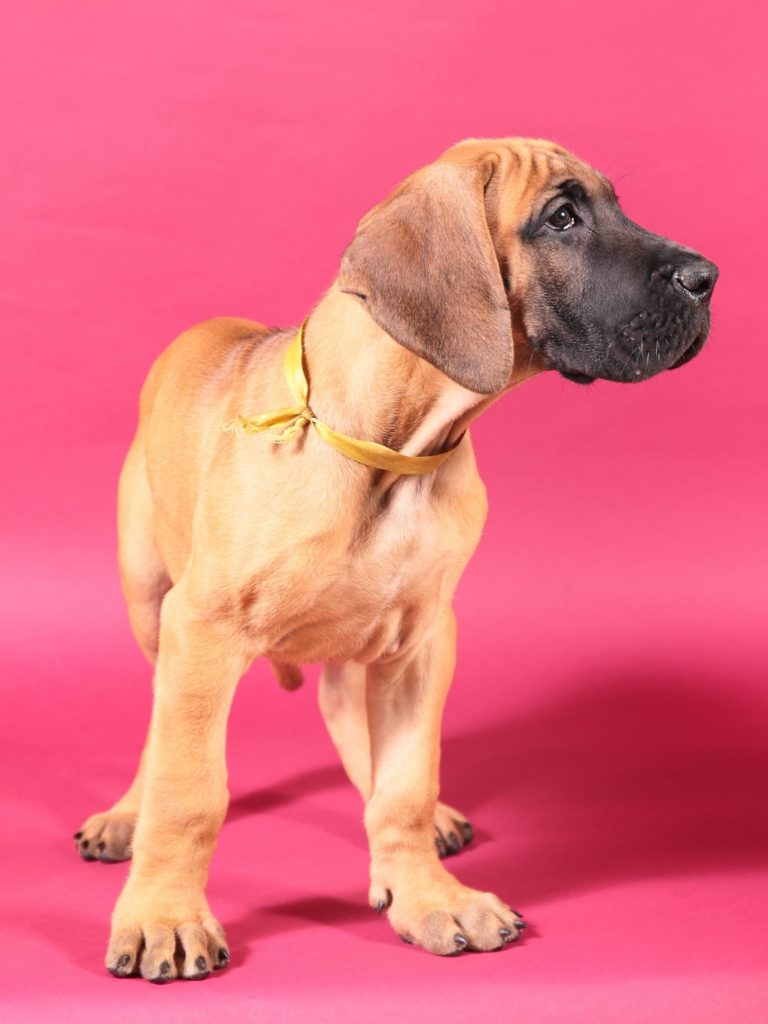Dogs, especially giant breed puppies such as Great Danes, are susceptible to growing pains, just like humans.
In this blog post, we will discuss the symptoms of growing pains in dogs, how to treat them, and how to prevent Panosteitis from happening in the first place!
Growing Pains in Dogs Overview
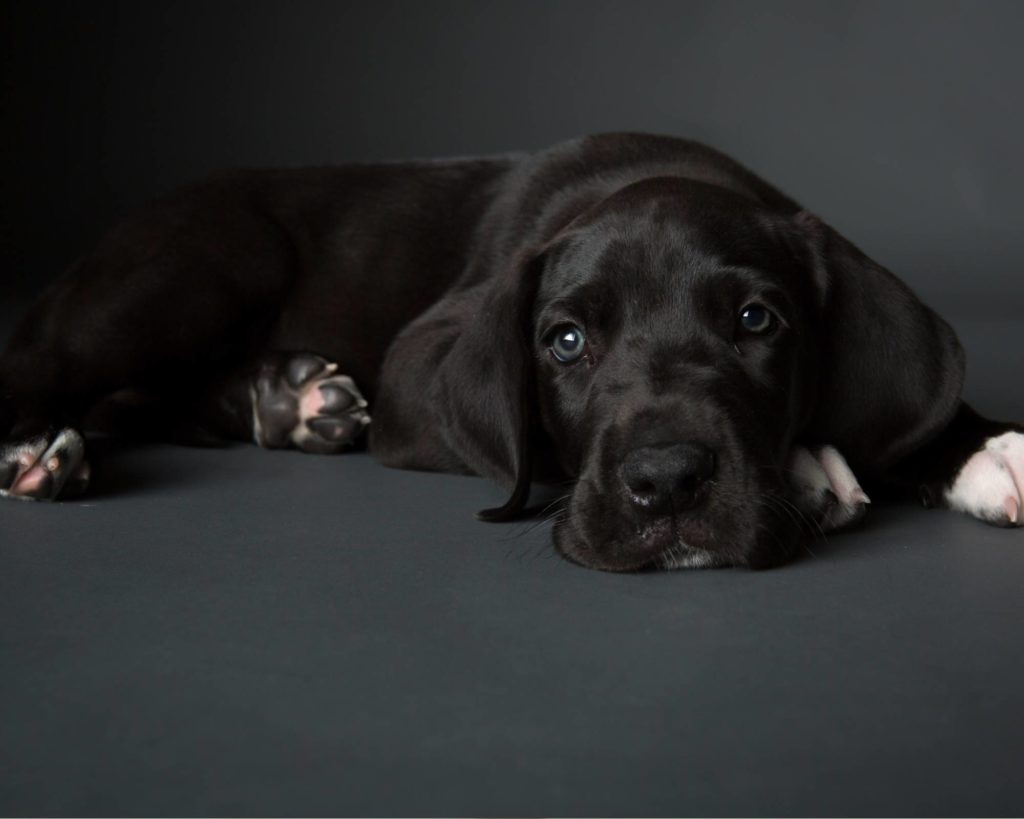
What is Panosteitis in Dogs?
Panosteitis, aka “growing pain” or “pano” affects puppies of all sizes, however giant breed dogs such as Great Danes are particularly susceptible.
Pano is an often painful condition where the long bones of the legs become inflamed, causing lameness.
This inflammation can happen on one or multiple legs, and can even move from leg to leg as the condition progresses.
Panosteitis typically begins when puppies are between five and eighteen months old, however, it can be seen in puppies that are younger, too. Sudden onset may be common, and the symptoms will come and go.
Is My Great Dane Puppy Knuckling?
Our Top Tips for Strengthening Puppy Feet
The Best List of Large & Giant Breed Puppy Foods
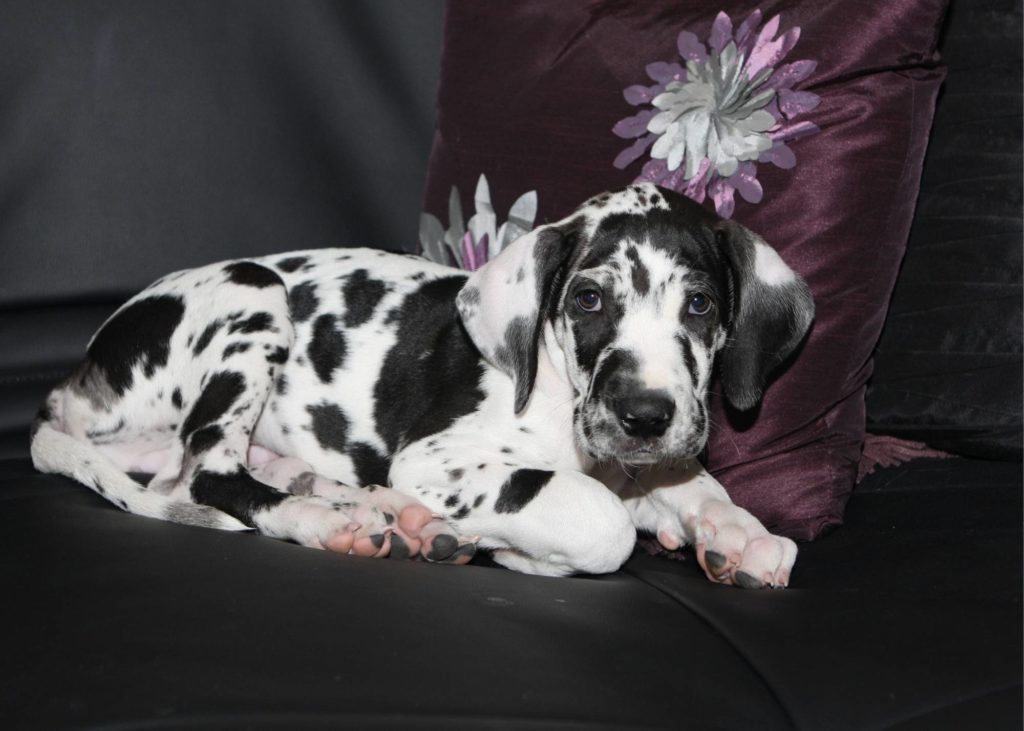
What are the symptoms of puppy growing pains?
If you are concerned that your giant breed puppy has a pain of any kind, it is important to see your veterinarian. Your puppy may be experiencing the following symptoms:
- Lameness
- Pain that seems to move from leg to leg
- Stiffness
- Pain when touched
- Fever
- Decreased appetite
- Low energy
- Weight loss
It’s important to note that Panosteitis tends to be cyclical. Not only will the pain move from limb to limb, but the symptoms will also come and go.
One day your puppy may seem completely fine, while the next he may be lame on all four legs.
This can make pano frustrating to diagnose, as it can mimic other conditions such as arthritis or hip dysplasia.
The ULTIMATE Great Dane Feeding Chart
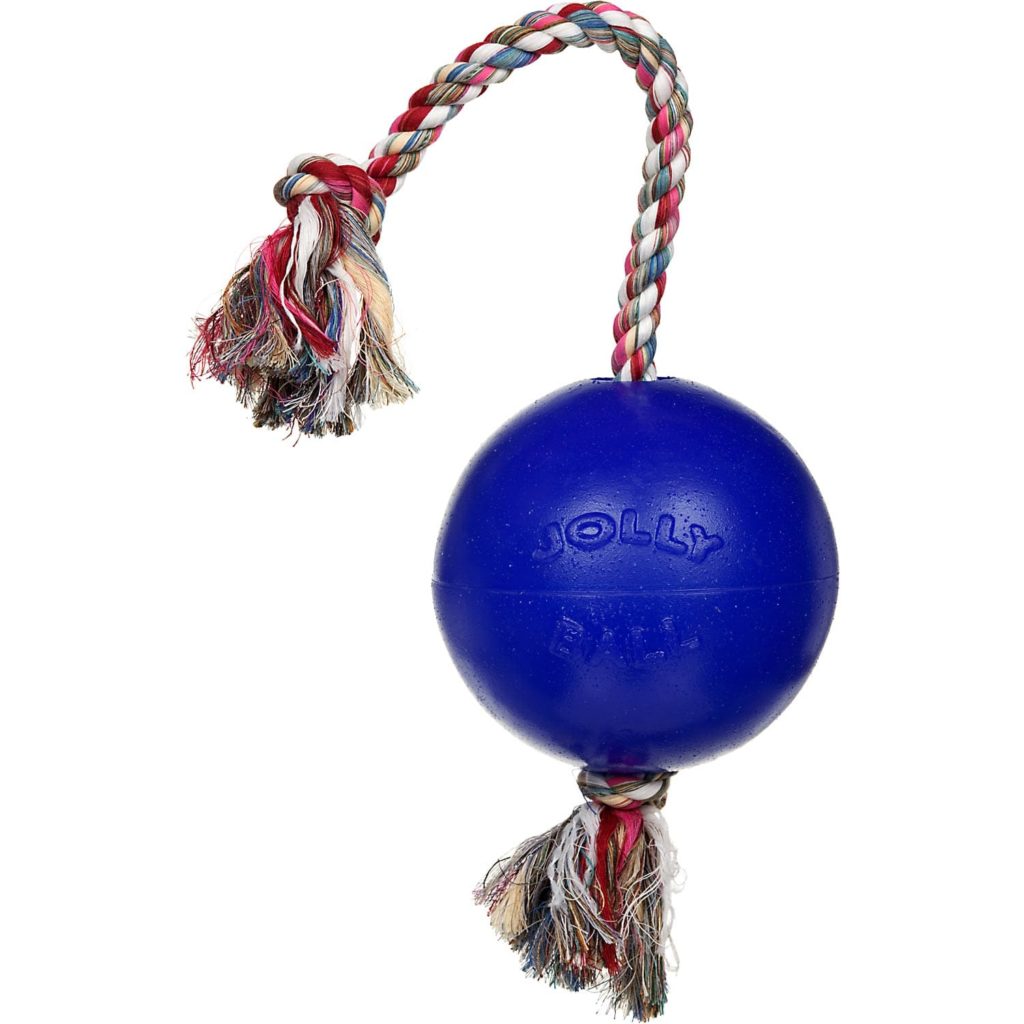
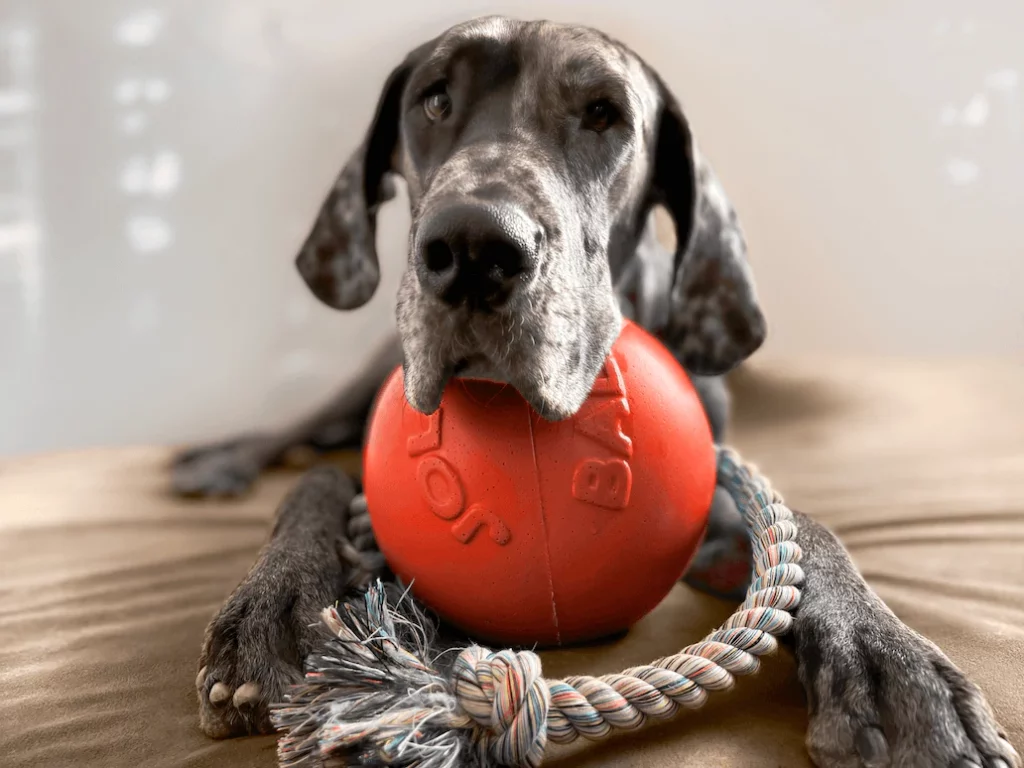
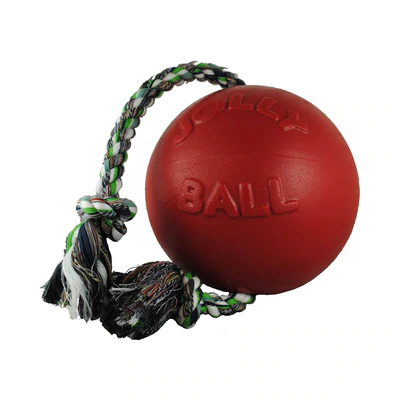
How are growing pains diagnosed?
Your veterinarian will likely take a complete history and perform a physical exam.
They will ask you when you first noticed the symptoms, if it happens in one or more legs, when it tends to occur, and if there is anything that seems to make them better or worse.
Your vet will also palpate your puppy’s long bones and joints to see if there is any pain or swelling, and then they will take x-rays.
It is important to note that it can take up to ten days for radiographs to indicate changes in bone density. Radiographic evidence of changes in the bone is an important component of pano diagnosis and recurring x-rays may be indicated a few weeks later.
The x-rays will further aid in addressing other bone-growth disorders such as knuckling, HOD, or dysplasia.
There may be a genetic component to Pano, so it’s important to talk to your breeder as well.
What do I do if my Puppy is not Eating?

How long do growing pains last?
This painful growth disorder affects young, large growing dogs and tends to be self-limiting, however, it is very painful and must be treated. An affected dog will have symptoms one day that may be worse or better the next. More than one bone is often affected.
The good news is that most puppies will outgrow the condition by the time they are two years old.
There are things that you can do to help reduce the chance of Panosteitis occurring (more on this below).
Bringing a new Great Dane puppy home? Here is What to Expect!
How to Stop Puppy Biting, FAST!
Teach Your Puppy to Stop Jumping Up
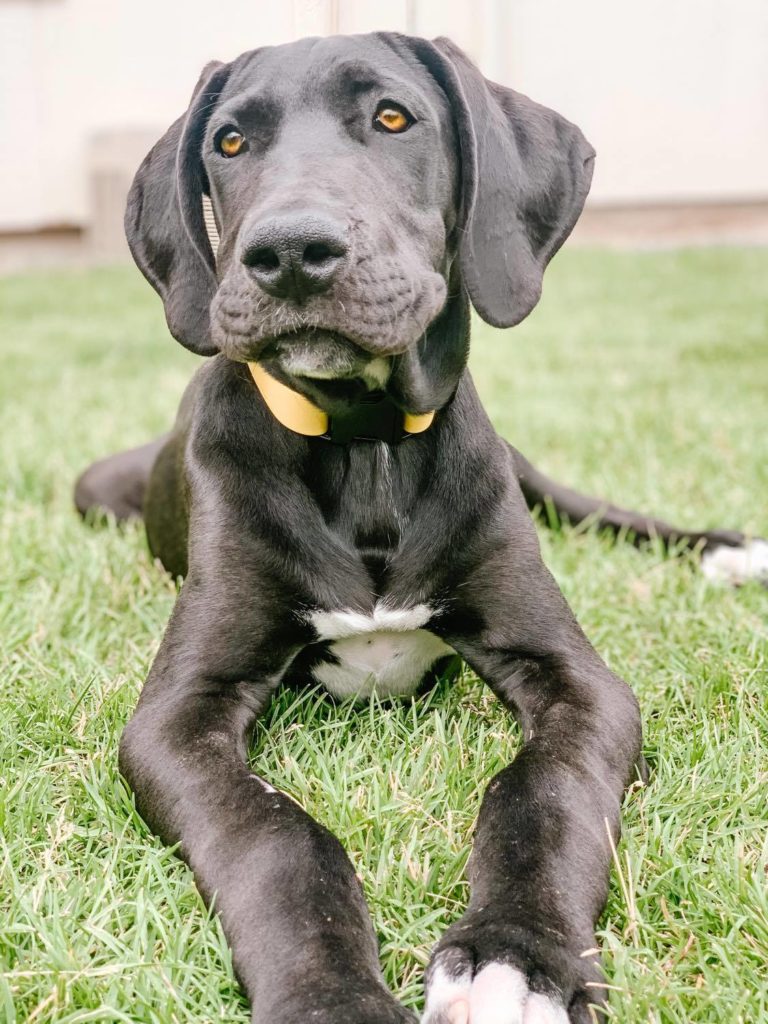
What are the Causes of Growing Pains in Dogs?
Large and giant breed puppies such as Great Danes, Labrador Retrievers, German Shepherds, and Golden Retrievers are prone to growing pains because they grow so quickly as puppies.
It is believed that nutrition plays a role in Panosteitis, however, the direct cause beyond that isn’t fully understood.
It stands to reason that because these puppies are growing so rapidly, their bones and joints may not be able to keep up with the demand, leading to inflammation and pain.
This is a major reason to encourage slow, even growth when raising a large breed dog! Affected dogs have often been growing too quickly and changes must be made to properly support the growth of the long leg bones.
Excessive exercise in rapidly growing dogs may also contribute. Large and giant breed puppies should be encouraged to play and move naturally and freely on soft varied terrain.
Very long walks on pavement, slick or hard floors, sliding, and jumping off of furniture can be detrimental and cause painful lameness and permanent deformities (such as angular limb deformity, which will cover in another post).
Hard or vigorous exercise should never be encouraged.
Life’s Abundance Dog Food Review
Big Barker Dog Beds: Must Have or Big NO?

Does food cause growing pains in puppies?
At Hello Danes, we believe that nutrition plays a key role in the health and well-being of your giant breed puppy.
This includes the role of untested, poorly formulated, or incorrectly formulated foods, treats, and toppers in the development of growing pains. We are covering this more in-depth below, however, it is important to note the following:
Giant breed puppies should be fed a large or giant breed puppy food from a company that employs a board-certified veterinary nutritionist and rigorously researches and tests their foods.
Boutique diets, most grain-free kibbles, and adult or All-Life-Stages foods offer unbalanced, poorly formulated and inappropriate nutrition for Great Danes which can lead to many issues including:
- Knuckling
- Chronic loose stools
- Itching and ‘allergies’
- Poor overall muscle development
- Flat feet, cow hocks, downed pasterns
- Incorrect structural development
- Nutritional Secondary DCM (Dilated Cardiomyopathy)
Grain-Free Foods and DCM – Real or Not?
Should I feed PUPPY or ADULT food to my Great Dane Puppy?
The BEST Foods for Giant Breed Dogs
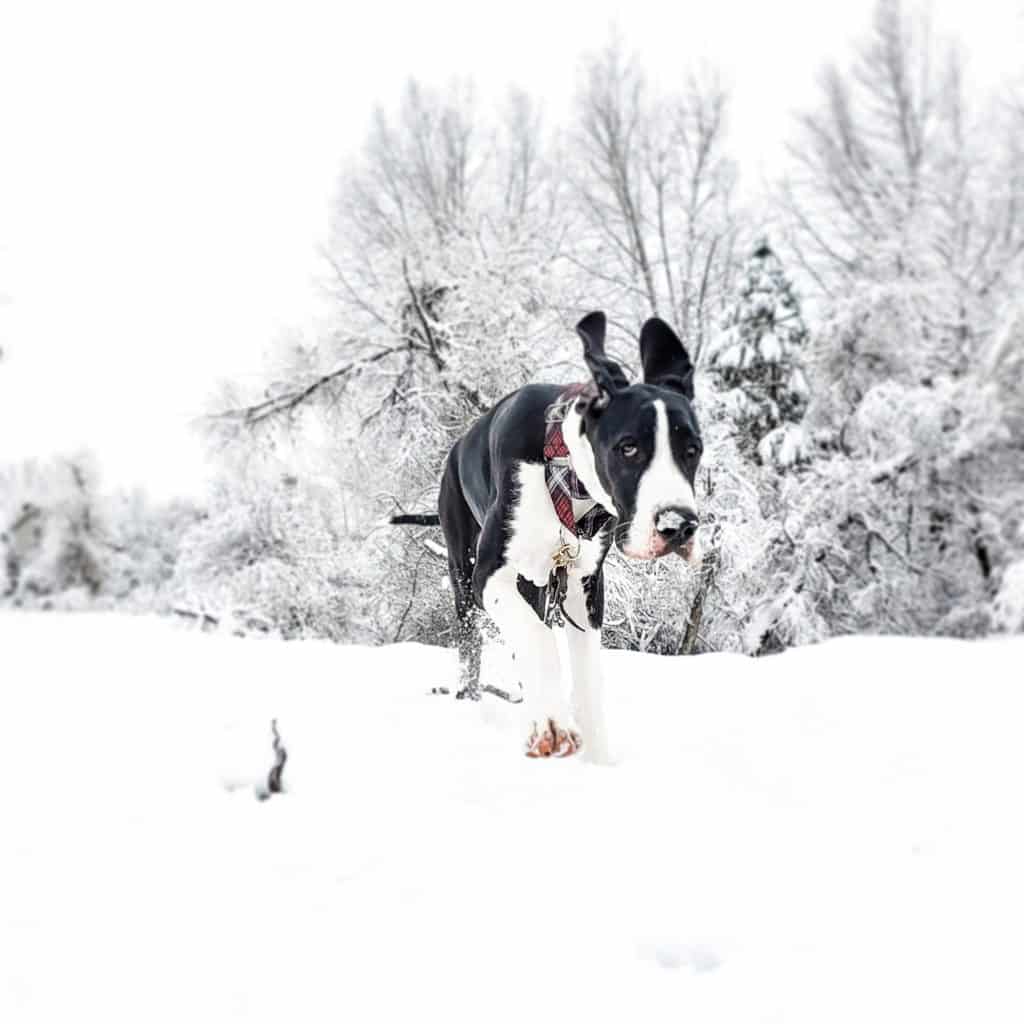
Explosive growth and growing pains in giant breed puppies
Growing too fast is a significant contributor to Pano in large breed dogs.
Many people, in their desire to have the biggest puppy, will inadvertently overfeed their young dog or will feed them an incorrect diet and celebrate their incredibly fast growth.
This leads to growing pains, knuckling, flat feet, pano, HOD, and orthopedic disorders such as hip dysplasia.
It is important for owners of large breed puppies, as well as giant breed puppies, to be aware of the importance of choosing a correct diet and limiting intake to encourage slow, even growth, muscle development, and correct bone density.
How is Puppy Growing Pains Treated?
It is important to seek veterinary advice if you are concerned that your puppy has pain, limping, or lameness of any kind. Below we’ve included everything you need to know for the treatment of acute lameness and growth pains in dogs.
The role of nutrition in Panosteitis pain
We believe that nutrition plays a key role. There is a lot of outdated advice floating around, telling owners of large and giant breed puppies to only feed ‘adult’ food.
“Adult food only” is dangerous advice based on outdated formulas of foods. Science and research have advanced since this time and the most appropriate nutrition is no longer what you may have heard.
If you have a puppy that is experiencing bone diseases and growth problems, including knuckling, HOD, angular limb deformity, flat feet, or too-fast growth you must switch them immediately to food that meets the following criteria:
- Formulated by a board-certified veterinary nutritionist
- Rigorously researched and tested
- Large or giant breed PUPPY formula
- AAFCO statement indicating that the food was substantiated in food trials for the growth of large breed puppies (70lbs + as an adult)
We’ve included a list of appropriate foods for Great Danes (and other large or giant pups) below.
- Purina Pro Plan Large Breed Puppy – any flavor!
- Purina Pro Plan Sensitive Skin & Stomach Large Breed puppy – TOP PICK, salmon-based
- Eukanuba Large Breed Puppy (Great for active and sporting dogs)
- Purina One Large Breed Puppy (Excellent budget option)
- Hill’s Science Diet Puppy Large Breed
- Royal Canin Giant Puppy Dry Dog food (to age 12 months) – TOP PICK, PREMIUM OPTION
- Royal Canin Giant Junior Dry Dog food (8-24 months)
- Purina Large Breed Puppy Chow
Check out THE GIANT DOG FOOD PROJECT to compare brands and values.

Veterinary guidance for growing pains & inflammation
Your veterinarian will also prescribe pain medication to help your puppy be more comfortable when they are experiencing a painful flare-up.
Pain relief is an important component of this treatment, as it will help your puppy feel better and encourage them to move around, which is necessary for correct bone development.
How to care for a puppy with growing pains
A puppy in pain may be unwilling to move much. It is important to be patient and follow these steps for treating Panosteitis:
- Keep your puppy at a healthy body weight; do not overfeed your puppy!
- Give your puppy anti-inflammatory drugs and pain medications as prescribed by your veterinarian
- Encourage moderate exercise, with veterinary approval
- Movement should be on soft, varied terrain such as grass, sand, and gravel; not pavement, hard floors or slick surfaces
- Use an orthopedic bed
- Keep nails trimmed
- Feed an appropriate high-quality diet (see nutrition topics)
- Encourage slow eating and avoid the use of excessive treats or food toppers (especially during flare-ups)
- Talk to your veterinarian if you notice worsening symptoms
Keep in mind that this is a self-limiting disease and with proper support, you should notice positive changes! Most dogs go on to live a normal, healthy life.
Need more? https://vcahospitals.com/know-your-pet/panosteitis-in-dogs
Has your puppy experienced this? Leave a comment below and share your story!

